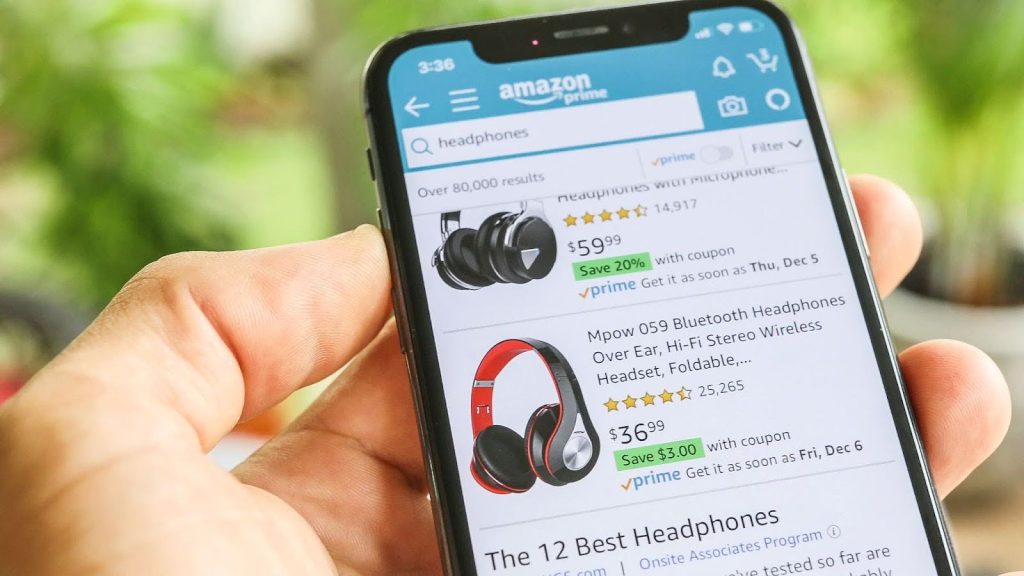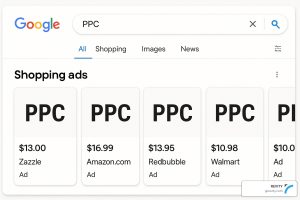Amazon marketing is essential in the digital marketplace of Amazon, brimming with opportunities for sellers. To thrive here, you need more than product listings — mastering Amazon’s marketing toolkit is key.
Understanding Amazon’s marketing ecosystem is essential whether you’re a newcomer or a seasoned seller. From intricate search algorithms to powerful advertising and insightful analytics, Amazon offers a treasure trove of resources to boost visibility, reach customers, and drive sales. It’s a blend of optimizing listings, leveraging ads, and deciphering customer behavior.
This blog simplifies Amazon marketing and provides practical insights to help you succeed in this competitive online marketplace.
Understanding Amazon’s search algorithm
Amazon’s search algorithm is the digital compass guiding shoppers through its vast marketplace. It ensures that customers find what they’re looking for when they search for products. Unlike traditional search engines like Google, Amazon’s algorithm is finely tuned to aid customers in discovering products to buy.
Here’s a simplified look at how it operates.
When a customer enters a search query, Amazon scans its extensive product catalog for items that contain the relevant keywords. These keywords are in product titles, descriptions, and backend search terms.
The algorithm evaluates the relevance of each product to the search query. Various factors, including keywords, product ratings, sales history, and more, determine applicability.
Amazon takes into account how customers interact with search results. Click-through rates and conversion rates play a crucial role. Products frequently clicked and purchased in response to a particular search query are deemed more relevant.
Amazon SEO basics
Understanding Amazon’s SEO principles is pivotal to mastering Amazon marketing. It’s a great way to optimize your product listings to enhance visibility and, in turn, boost your sales. Amplifying your products’ visibility in search results leads to heightened visibility and translates into more clicks, conversions, and overall success on Amazon.
We’ve compiled information about the crucial aspects of Amazon SEO you need to know about.
Product titles
Think of the product title as your first impression. It should be concise yet descriptive, clearly showing what your product offers. This is where you incorporate essential keywords for search visibility.
Product descriptions
The product description is your canvas to paint a vivid picture of your product. Make it informative and engaging, addressing potential questions and objections that a customer might have.
Images
Visuals matter. High-quality images showcase your product effectively. Amazon allows multiple images, so use this opportunity to provide a comprehensive view of your product from various angles. Include lifestyle images or infographics to highlight key features.
It’s also important to be aware of effective Amazon SEO practices.
Keyword research
Start by conducting thorough keyword research. Identify the most relevant and high-traffic keywords for your product. Amazon’s Keyword Planner and third-party tools are invaluable for this task.
Optimize titles
Craft product titles that grab attention and incorporate your chosen keywords. The key here is to maintain clarity and relevance without keyword stuffing.
Refine descriptions
Your product descriptions should be both informative and persuasive. Showcase the unique selling points of your product and preemptively address potential customer concerns.
Bullet points
Use bullet points to briefly summarize key product features. This format makes it easy for shoppers to grasp the benefits of your product at a glance.
Backend keywords
Don’t forget the backend keywords section. This section isn’t visible to shoppers but plays a vital role in Amazon’s search algorithm. Include synonyms, common misspellings, and related terms here.
Image excellence
Ensure your product images meet Amazon’s quality standards. High-resolution images, including zoomable ones, are essential.

Amazon Sponsored Products
Amazon Sponsored Products are a fundamental part of Amazon Advertising. They enable sellers to promote their products within Amazon’s search results and product detail pages. Essentially, they are advertisements that appear as sponsored listings, usually at the top or within search results, making them more prominent to potential customers.
Here’s the mechanics behind it: When a shopper searches for a product on Amazon, the search engine decides which products to display. Sponsored Products operate on a bidding system, where sellers bid on specific keywords relevant to their products. Your ad gets displayed if your bid wins and your product aligns with the search query.
These ads are labeled as “Sponsored” to differentiate them from organic search results. When a shopper clicks on your sponsored product, they are directed to your product detail page, where they can make a purchase.
Setting up and managing sponsored product campaigns
Creating and managing sponsored product campaigns might seem complex, but the benefits of increased visibility and sales are worth the effort.
The first step to kickstart your Amazon advertising journey is setting up an Amazon Seller account if you don’t already have one.
The next crucial step is conducting thorough keyword research. This involves identifying keywords that are directly relevant to your products. Put yourself in the shoes of potential shoppers and think about the terms they might use to search for products like yours.
Now that your keywords are ready, it’s time to create your advertising campaign. Head to your Seller Central account and navigate to “Amazon Advertising.” Select “Campaign Manager” and opt for “Sponsored Products.” Within this section, you can initiate a new campaign. Give your campaign a meaningful name and set your daily budget according to your advertising goals.
With your campaign structure in place, it’s time to select the keywords you’ve researched. You have the flexibility to include both broad match and exact match keywords, allowing you to reach a wider audience.
Determining your bid for clicks on your sponsored products is a critical aspect of the process. Your bid puts you in the competition for ad placement alongside other sellers.
To keep your campaign organized and manageable, you should group your keywords into ad groups based on their relevance. This approach simplifies campaign management and optimization.
Now comes the creative part — crafting compelling ad content. This includes creating eye-catching product images and persuasive ad copy. It’s essential that your ads accurately represent your products to ensure a positive customer experience.
Your job doesn’t end once your ads are live. Regular monitoring of your sponsored product campaigns is essential. Keep a close watch on metrics like click-through rate (CTR), conversion rate, and return on ad spend (ROAS). Use these insights to fine-tune your campaigns by adjusting your bids and keywords to improve performance.
As you gain more experience and gather valuable data, don’t hesitate to experiment with your campaigns. Consider expanding your reach and testing new keywords and ad creatives to optimize your advertising strategy for maximum reach and conversions.
It’s important to note that successful sponsored product campaigns require ongoing optimization. Continuously analyze your data, adjust your strategies, and refine your campaigns to achieve the best results.

Amazon’s A9 Algorithm
No discussion of Amazon marketing is complete without a deep dive into the fascinating world of Amazon’s A9 algorithm! In this section, we’ll explain what the A9 algorithm is, how it influences the ranking of products on Amazon, and the strategies you employ to improve your product’s visibility.
At the core of Amazon’s sprawling e-commerce ecosystem lies the A9 algorithm. This is Amazon’s proprietary search and ranking algorithm. Its primary mission is to offer customers the most relevant and satisfying shopping experience imaginable. It accomplishes this by meticulously assessing various factors to determine the order in which products appear in search results.
The A9 algorithm considers a multitude of factors when determining the ranking of products. While Amazon keeps the precise inner workings of A9 closely guarded, we do have insights into the key elements that wield influence.
Relevance
The foremost factor is a product’s relevance to the search query. This encompasses elements like product titles, descriptions, and keywords. Ensuring your product listings are finely tuned to align with relevant keywords is paramount.
Sales velocity
The pace at which your product sells holds substantial sway. Products with a brisk sales velocity often secure higher rankings. Promotions and advertising efforts stimulate sales, giving your rankings a boost.
Customer Behavior
A9 keeps a watchful eye on how customers interact with products. Metrics such as click-through rate (CTR), conversion rate, and customer reviews provide valuable insights. High CTR and favorable reviews work in your favor.
Competitive pricing
Your product’s pricing plays a role. A9 evaluates whether your pricing aligns with similar products in the market.
Fulfillment method
Amazon’s fulfillment options, such as FBA (Fulfillment by Amazon), positively impact rankings. These options typically result in swifter shipping and heightened customer satisfaction.
Now that we understand the factors that influence product rankings, let’s explore some strategies to align with the A9 algorithm.
- We’ve said it before, but it bears repeating: Keyword research is crucial. You should conduct thorough research to identify and include relevant keywords in your product titles and descriptions. Utilize tools like Amazon’s Keyword Planner to discover high-performing keywords.
- Competitive pricing is another important factor. Regularly monitor and adjust your product pricing to ensure competitiveness within your niche.
- Customer reviews play a significant role in your Amazon journey. Encourage satisfied customers to leave reviews and maintain a responsive approach to customer inquiries. Swift issue resolution helps maintain a positive reputation.
- Your product listings should be comprehensive, precise, and free of errors. This includes providing detailed product specifications.
- Effective inventory management is essential. Ensure you maintain a well-stocked inventory to prevent running out of popular items, which negatively impacts rankings.
- Finally, keep a watchful eye on your competitors’ strategies and be ready to adapt your approach as needed to stay competitive.
Bear in mind that the A9 algorithm is dynamic, and what works today may necessitate adjustments tomorrow. Continuous monitoring of your product rankings and agile adaptation of your strategies are the keys to harmonizing with this ever-evolving algorithm.
Utilizing Amazon Analytics
Amazon Analytics plays a crucial role in your journey as a seller. It acts as your performance scorecard, providing insights into your product listings’ performance. Metrics like page views, sessions, and conversion rates inform your marketing efforts and highlight which products need attention.
In addition, Amazon Analytics reveals valuable customer demographics, helping you better understand your target market. It also unveils the sources of your website traffic, enabling you to optimize your marketing budget and focus on impactful channels.
Incorporating Amazon Analytics empowers you to refine your strategies based on real data and customer behavior, leading to effective marketing campaigns and increased sales.

Revity makes Amazon marketing easier than ever
We’ve explored a wealth of strategies and tools, from Sponsored Products and the A9 algorithm to the power of Amazon Analytics. Now, you might be wondering, “How do I navigate this complex terrain effectively?” That’s where Revity Marketing Agency comes to the rescue.
Revity isn’t your run-of-the-mill marketing agency. We are a trusted partner that specializes in Amazon marketing strategies. Our team of seasoned experts knows the ins and outs of the platform, and we’re armed with the knowledge and experience to help you thrive in the competitive world of Amazon.
Whether you’re a brand owner looking to enhance your presence, an e-commerce enthusiast aiming to boost your sales, or a business seeking to make a mark on Amazon, Revity Marketing Agency offers tailor-made solutions to optimize your Amazon marketing efforts.
In an era where Amazon’s influence is ever-expanding, having a dedicated partner like Revity makes all the difference.
If you’re ready to elevate your Amazon marketing game and achieve remarkable results, contact Revity Marketing Agency!
































